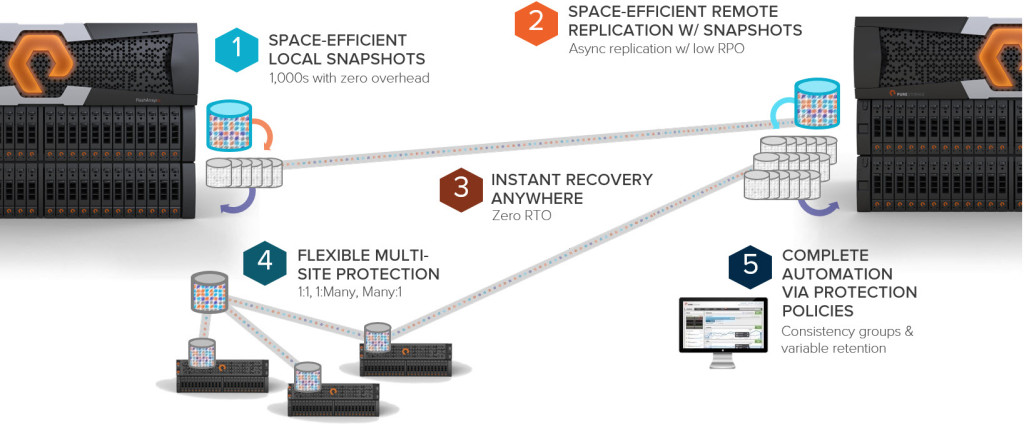It has been awhile since I have done a solely Purity operating environment post and with the recent release of our Purity 4.6 operating environment I thought it was a good opportunity to do one. I will overview some new features and changes, some big some small.
4.6 has been in Directed Availability (DA) for some time, so many of you might already have this, but I decided to wait until it was closer to GA (this is imminent) to post. Not a gigantic release, but I think there is some cool stuff in it regardless.
Here is a brief listing of some of the new stuff:
NEW FEATURES
- VLAN tagging Introduces support for VLAN tagging for iSCSI connections to the FlashArray. VLAN tagging allows multiple VLAN interfaces to be configured on physical iSCSI ports.
- Replication network bandwidth throttling Introduces the ability to set a maximum network bandwidth utilization for replication between two connected arrays. Allows configuration of a default maximum bandwidth and/or a time window during which a different maximum bandwidth is enforced.
- Deduplication-preserving replication Introduces the ability for Purity to preserve inline deduplication savings when transferring replication data to a target array, to reduce the network bandwidth utilization.
- Protection group copy Introduces the ability to copy protection groups, including their member hosts, volumes, and snapshots. Protection group copy is supported in the CLI and REST API.
- The Pure Storage SMI-S Provider Release 1.0.0 of the Pure Storage SMI-S provider is embedded in Purity 4.6.0 release. SMI-S enables both hardware and software interoperability between different vendors’ enterprise storage products and allows vendors to develop to a single standard interface. For more information, please see the SMIS-S release notes.
- Improved readability of graphs in the Purity GUI In the GUI Dashboard and Analysis tabs, changes the color of the write graph to orange to distinguish it from the blue read graph.
- CLI Changes This is mostly to cover the new features above
- REST API version 1.5 Some new REST calls for new features and general enhancements and fixes for our REST API service.
Continue reading “Introducing FlashArray Purity Release 4.6”


